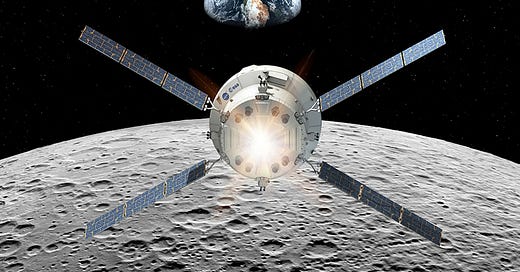Is ESA getting screwed on Artemis deal?
A breakdown of Europe's contributions to the Artemis programme.
Issue 46. Subscribers 1,571.
This topic has been one that I have been ruminating on for several months. While I respect NASA, I think Europe too often gets caught on the wrong side of a bad deal. Artemis has, for possibly the first time in history, given Europe a good hand with which to negotiate. This issue will likely ruffle some feathers, but I think it's important to ensure that I am not the only one that feels this way.
To my 34 new subscribers, enjoy your first issue and, as always, if you have any comments, suggestions, or tips, please reply to this email.
Keep reading with a 7-day free trial
Subscribe to Europe in Space to keep reading this post and get 7 days of free access to the full post archives.





